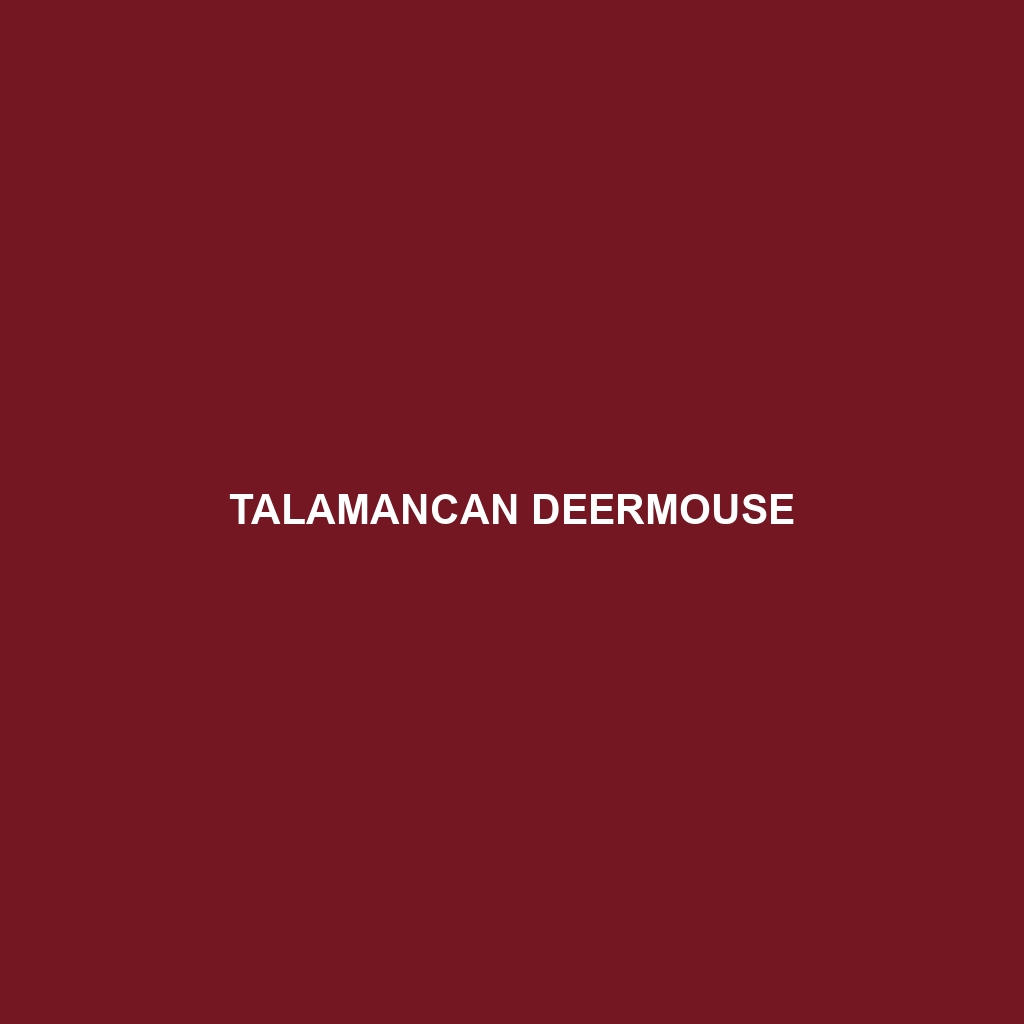Small-footed Deermouse (Scientific Name: Peromyscus maniculatus)
Common Name: Small-footed Deermouse
Scientific Name: Peromyscus maniculatus
Habitat
The Small-footed Deermouse is primarily found in the western regions of North America, notably in mountainous areas and grasslands. This species thrives in dry grasslands, shrublands, and open woodlands, often favoring rocky terrains and areas with abundant ground cover. Geographic locations include the Rocky Mountains, parts of the Sierra Nevada, and regions across the Great Basin where temperatures are moderate and moisture levels are variable.
Physical Characteristics
Small-footed Deermice are relatively small rodents, usually measuring 13 to 20 centimeters in length, with tails that can be slightly longer than their bodies. Their fur is generally soft and varies in color from light brown to reddish-brown, with a lighter underbelly. Distinctive features of this species include large ears and big, dark eyes, designed for enhanced hearing and vision in their natural habitats. The small feet of this deermouse also contribute to its name and are adapted for climbing and navigating rugged terrains.
Behavior
Small-footed Deermice are primarily nocturnal, exhibiting increased activity during the night hours. They are known for their agility and are often seen climbing on vegetation or foraging on the ground. These rodents are social creatures, often living in small family groups. Their communication includes a variety of vocalizations and scent marking which helps establish territory. Additionally, they are known to create elaborate burrow systems for shelter and nesting, showcasing their adaptability to different environmental conditions.
Diet
The diet of the Small-footed Deermouse consists mainly of seeds, fruits, nuts, and insects. This omnivorous feeding habit allows them to thrive in various ecosystems. They play a crucial role in their environment by helping to disperse seeds and keep insect populations in check. Their foraging practices are adaptive, depending on seasonal availability of food sources, which demonstrates their resilience in changing habitats.
Reproduction
Small-footed Deermice typically breed in the spring and summer months. Females give birth to litters averaging 3 to 6 offspring after a gestation period of about 25 days. These young are altricial, meaning they are born hairless, blind, and helpless. The mother is responsible for their care until they are able to venture out and find food on their own, usually around 3 weeks after birth. Their reproductive strategy enables a quick population recovery in suitable habitats.
Conservation Status
The Small-footed Deermouse is currently classified as Least Concern on the IUCN Red List; however, regional populations may face threats from habitat loss due to agriculture and urban development. Conservation efforts are important to maintain their habitats and ensure the species does not become threatened in specific ecosystems.
Interesting Facts
Interestingly, the Small-footed Deermouse has developed adaptations that allow it to survive in colder climates, such as its thick fur and ability to store food during the warmer months. Additionally, they are adept climbers, which not only helps them evade predators but also aids in their foraging behaviors.
Role in Ecosystem
In its ecosystem, the Small-footed Deermouse plays a significant role in seed dispersal and as a prey item for various predators, including birds of prey and small mammals. Their foraging activities help maintain the balance of the environment, highlighting the interconnectedness of species. By serving as both a seed disperser and a predator’s food source, they contribute to the health and stability of their habitats.
